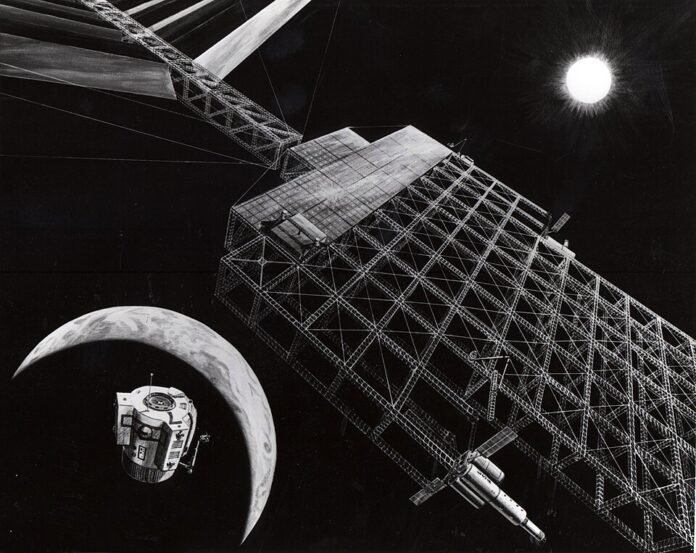Lunar exploration is entering a new era. Long after the Apollo missions, a renewed international interest comes with ambitious plans for a long-term presence on the Moon. NASA’s Artemis program is leading efforts to return humans to the lunar surface, with Artemis III aiming to land astronauts near the Moon’s South Pole as early as 2026. Meanwhile, countries like China and India have successfully conducted robotic missions, including landings and sample returns, while private companies are increasingly involved through partnerships and commercial lander missions. The focus has shifted from short visits to sustainable exploration, with goals that include building lunar habitats, developing on-site resource utilisation, and establishing infrastructure to support future crewed missions to Mars.
 Apollo astronaut exploring the surface of the Moon (Credit : NASA)
Apollo astronaut exploring the surface of the Moon (Credit : NASA)
One of the many challenges for spacecraft operating on the Moon is surviving the harsh, two-week-long lunar night. During this period, temperatures can plummet to below -170°C, making it extremely difficult to maintain power and thermal control. Without sunlight, solar panels become ineffective, forcing landers and rovers to rely on limited battery reserves or complex, often heavy, radioisotope heating systems. These conditions severely restrict mission duration, increase design complexity, and limit the feasibility of establishing long-term operations.
 The illuminated, daytime hemisphere of the Moon can be seen in this image but the night when night falls, an area is in darkness for about 2 weeks!
The illuminated, daytime hemisphere of the Moon can be seen in this image but the night when night falls, an area is in darkness for about 2 weeks!
Existing power solutions like solar panels and fission reactors are not enough to meet the high energy demands of a permanent lunar base, especially during the two-week-long nights. However, an innovative approach outlined in recent research suggests a radically different solution: using a constellation of space-based solar power (SBSP) satellites to beam energy continuously to the surface, regardless of the lunar day-night cycle. This was the very proposal contained in a paper by lead author Denis Acker published in Acta Astronautica.
In their paper, Acker and his colleagues proposed the ZEUS satellite constellation, which is designed to collect solar energy in orbit and wirelessly transmit it to the proposed DIANA lunar base at the South Pole. This system would allow facilities to operate continuously, supporting long-term lunar exploration and development regardless of the long lunar nights. The project focuses on adapting Earth-based satellite design to lunar needs, tackling issues like wireless power transmission, thermal control, energy storage, and precise satellite coordination.
 Artist impression of an Earth based Solar Satellite Power system, NASA’s Integrated Symmetrical Concentrator SPS concept (Credit : NASA)
Artist impression of an Earth based Solar Satellite Power system, NASA’s Integrated Symmetrical Concentrator SPS concept (Credit : NASA)
The ZEUS system would work by placing 300 solar-powered satellites in orbit around the Moon. These satellites would collect sunlight continuously as they orbit and convert it into microwave or laser energy, which would then be beamed to receiving stations on the lunar surface. These ground stations, located at the DIANA base, would convert the transmitted energy back into electricity to power habitats, rovers, and In Situ-Resource Utilisation facilities. The constellation would be carefully coordinated to ensure at least one satellite is always in line-of-sight with the base, providing a stable, uninterrupted power supply through the long lunar nights and variable lighting conditions near the poles.
The team also considers how future missions could use lunar materials to build parts of the satellite system, reducing reliance on Earth-based launches. Led by members of the Space Generation Advisory Council (SGAC) and ASTRAEUS, the research aims to overcome current energy limitations and make continuous lunar operations possible. Successfully implementing this technology would be a major step toward creating a sustainable, long-term human presence on the Moon.
Source : The ZEUS constellation – paving the way to sustainability on the Moon with Solar Power Satellites – IAC-24,C3,4,11,x87582


